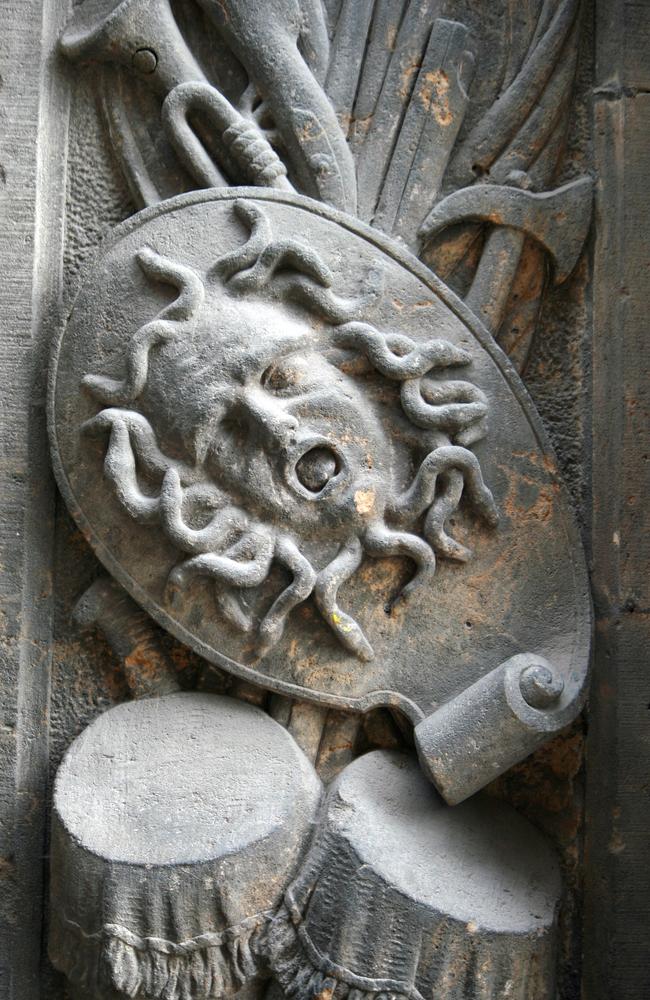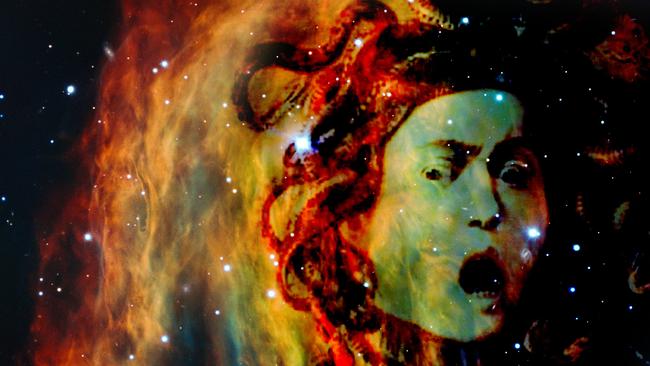BEWARE the gaze of Medusa: Her beauty may be extraordinary, but hidden behind the diaphanous veils is a story of dreadful destruction.
The ESO Very Large Telescope in Chile has stared into the face of Medusa.
And survived.
It’s also given us the clearest and most detailed image of this incredible ancient starburst yet.
But beyond the beauty is devastation: It’s actually the death agony of an ancient star.
Every wisp and ripple represents a spasm which caused a star’s outer layers to be thrown off into space as its tired and torn core gradually collapsed.
As the ESO points out: It’s a fate our own Sun will share. Eventually.
The serpentine tendrils of dust and gas, designated Sharpless 274, also has been aptly named “Medusa” — after the Ancient Greek mythical Gorgon with a beautiful female face, snakes as hair and a gaze that could turn you to stone.
Like the creature of mythology, the new image of the nebula is captivating.

Capturing Medusa has not proven so easy a task. Previously, the below image was among the best.
It sits 1500 years away in the direction of the constellation Gemini.
It’s big. But the filaments are insubstantial and dim. This has made it hard to picture.
But the ESO has stared long and hard into the heart of the titanic concussion to discover what tales it can tell.
At the heart of Medusa, however, is death. It is now a ghostly white dwarf star; the burnt-out ashes of its previous self.
No: The bright star at the centre of the picture (above) is not this white dwarf. That one is much closer. It’s the fainter, bluer star near the right hand side of the image.
RELATED: New study shows Pillars of Creation are ‘dying’ in starbirth
What of the ballooning beauty that betrays its agony? This will last only a few tens of thousands of years.
It’s natural art painted on an interstellar scale: It takes light four years to travel from one side of the cloud to the other. It’s still moving outward at a rate of 50 kilometres a second.
And it’s the dead star itself that is illuminating its own funeral shroud: Strong ultraviolet radiation is stripping atoms off the billowing clouds, producing ionised gas.
The characteristics of these glowing gases allow the Very Large Telescope to create this stunning image. The glow of different gases are captured in a variety of colours: The reds are hydrogen, for example, while the fainter green is oxygen.
The ESO’s Cosmic Gems program has been established to produce and highlight the wonders its new telescope finds. This promises to be just one of many.
#ESOSupernova is an excellent project to support if you wish to invest in science education. Discover how: http://t.co/k4v79HxlMH
— ESO (@ESO) May 20, 2015

Add your comment to this story
To join the conversation, please log in. Don't have an account? Register
Join the conversation, you are commenting as Logout
Who Owns Tassie’s farms: Biggest investors, landholders named
An annual investigation can reveal Tasmania has been a key destination for capital in the race to invest in Aussie agriculture. See the full list.
Families, billionaires and foreign owners of SA’s largest farms revealed
From sprawling stations in the north to prime cropping in the south – meet those who own South Australia’s largest farming properties. See the full list.